Do not hit, take care of the earth
The future seems tough. It is not possible to feed the entire world population except through intensive agriculture. There are many people in the world. However, over the years, intensive agriculture damages and stretches the land. Therefore, for the fertile land to remain fertile a great use of chemicals is necessary. But these chemicals cause the earth to deteriorate. That paradox.
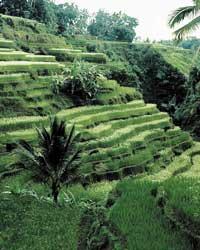
This implies the proposal of a fiction script in which agriculture is based on the use of degrading products of the soil, which makes agriculture not last long. Is there a solution?
Many believe that the secret lies in the rejection of traditional agriculture and the fact that nature is affected, that is, in what humans cannot repair by natural processes. In this way, conservation agriculture emerged, an alternative that proposes to recover and control the natural balance.
But to start applying an alternative you have to be brave, you can not exclude intensive agriculture without the guarantee of the alternative. On the one hand, make sure that the alternative does not affect the soil, otherwise the problem will not be solved. On the other hand, the new agriculture must maintain its current production, it is useless to develop an ecological solution if it does not provide enough resources to feed everyone.
Conservation agriculture recognizes that soil is an ecosystem and not just a support for accumulated fertilizers. It is an important idea, since if it is based on natural processes it ensures that it does not damage the soil. In short, if all the organisms that participate in this ecosystem have the opportunity to live, the earth will gradually recover the biological balance it needs.
However, in this type of agriculture soil control must be human and not nature. That is, the idea is not simply to let the soil develop by itself, but to use natural processes to protect soil balance and fertility. For example, instead of living a single species, many species will live on the ground, but that's right, man must choose what they are. Therefore, it is not a totally natural management, but, taking advantage of its advantages, it is a system of maintenance of agricultural production.
Thousands of living beings
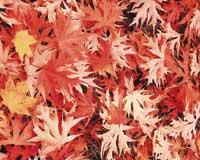
The soil accumulates some fertilizers depending on the species often cultivated. For example, beans, lentils, soy and legumes generally enrich the soil with nitrogen. But if lentils always grow in an area, other fertilizers are exhausted for a long time. The presence of other plants is essential, since the rotation of species provides other fertilizers. Finally, an adequate combination of species will help the land be productive.
In standard agriculture only one species grows in an area, resulting in a shortage of fertilizers. Chemicals or cattle excrement are used to combat it.
However, conservation agriculture, in addition to promoting rotation systems, prefers another way to enrich the land: depositing the plant remains of the harvest. For example, when the wheat is collected, the seed is collected, but the straw can be deposited in it to feed the soil itself. In this way, the living beings of this soil ecosystem break down straw (or litter or any plant residue) and create humus. In this humus are fertilizers, it is not necessary to add chemical fertilizers. Gradually the earth is structured correctly and natural processes are not interrupted.
Underway in many places
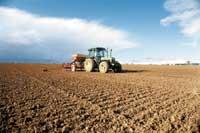
Since the idea was published, many groups have worked on conservation agriculture. The first major sessions were held in southern Brazil, the United States, New Zealand and Australia. These groups have come a long way, in some cases a work of about twenty years. Faced with local problems they had to develop the appropriate techniques. FAO (Food and Agriculture Organization) has also collaborated on these projects by promoting projects of this type of agriculture. In some places the harvest has been uncultivated, but in general the participation of man is indispensable.
In any case, for conservation agriculture to be successful it is necessary to greatly reduce mechanized planting. This does not mean that it must be completely discarded, but it must be taken into account to what extent the tools used in conventional agriculture damage the land.
Plow, for example, destroys the soil structure, turning the ground. It leaves visible the underground and the processes that occur in the absence of contact with the air are interrupted.
It is clear. Oxygen from the air eventually oxidizes organic molecules. On the contrary, the entrance of oxygen to the subsoil is low and its substances undergo transformations without oxygen. In nature, these transformations form substances enriched with nitrogen, sulfur, phosphorus and other elements, which are responsible for the accumulation of fertilizers.
Keeping the soil
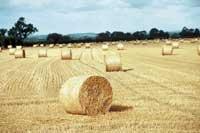
The plough condition will be avoided by creating a well-structured soil. Its main advantage is the absence of erosive problems, not by chance, but the combination of many erosion protection factors.
On the one hand, the vegetation itself protects the land from the influence of rain and strong winds, both by the plant layer that composes it and by the thousands of roots that compact the soil. On the other hand, humus and soil clay, when mixed, resist the earth. And next to them, the holes made by the worms help distribute the fallen water. This is how nature structures the earth.
All this contributes to soil conservation, since if they continue to function, farmers will not exhaust the land. Moreover, since it is a practically non-machined system, the cost is much lower. Maybe not, but in the long run yes.
But we must not forget! We talk about agriculture! Every day you have to grow thousands or millions of tomatoes, orchards, apples or strawberries. Perhaps billions. And much more in grain of wheat, corn, olives, almonds, etc. It is difficult to maintain this production from the beginning, since the farmer needs an adaptation period to incorporate new techniques. But in the long run it can be a good alternative.
What happens in uncultivated meadows or forests? How is the earth? In these places, if man's hand is not introduced, dead plants, fallen leaves, etc. remain in the ground forming a layer of plant waste.
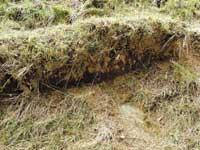
These plant residues degrade and many living beings participate in this process. These residues feed on large insects, worms, worms and, in another order, bacteria and fungi. All these digestions of many steps lead to the return to the soil in the compounds generated by many elements, which is enriched, that is, contains a lot of carbon, nitrogen, sulfur and phosphorus.
Some of these products are reabsorbed by plants. Others dissolve in water and many others are transformed by chemical reactions. It is not possible to explain all the processes that occur there, but the result is an essential biological synthesis for the 'health' of the soil of a substance called humus.
The humus holds the soil clay and prevents erosion. In addition, as it is an accumulation of fertilizers and water, it ensures soil fertility and maintains the balance of moisture.





